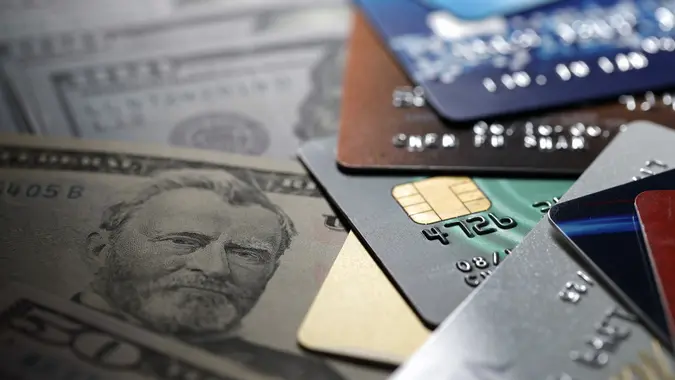I Paid Off $10K of Debt For Less Than Owed — Here’s How I Did it

Commitment to Our Readers
GOBankingRates' editorial team is committed to bringing you unbiased reviews and information. We use data-driven methodologies to evaluate financial products and services - our reviews and ratings are not influenced by advertisers. You can read more about our editorial guidelines and our products and services review methodology.

20 Years
Helping You Live Richer

Reviewed
by Experts

Trusted by
Millions of Readers
Credit card debt can feel like getting mired in quicksand. You make some purchases or take small steps forward, and before you know it, you’re stuck. The prospect of ever paying everything back feels so overwhelming that, after a while, you stop trying. You figure that since you’re drowning anyway, what’s a few dollars more? Turns out, a lot. Before you know it, you’ve racked up $10,000 in debt.
That’s what happened to Alice Lancaster, a TikTok creator who made a candid video about her experience getting out of $10,000 in credit card debt. Her approach didn’t involve complicated financial maneuvers — just a willingness to save and talk to her credit card company. These are steps that anyone can take to get out of debt, including you.
Stop Ignoring Your Bill
It’s easy to ignore those credit bills as they come in, especially when the balances keep climbing higher and higher. Lancaster admits that she did just that when her bills arrived, overwhelmed by anxiety about her debt.
Anxiety is a natural response, given how much debt can impact your future. However, it’s not a terribly productive emotion, especially if it compels you to freeze up and allow yourself to sink further into the quicksand of debt.
Lancaster realized she had to take control of the situation and face her debt head-on.
Contact Your Credit Card Company
Her first move was to call her credit card company and see if she could negotiate a deal. This approach is a wise one — so much so that even the Consumer Financial Protection Bureau (CFPB) endorses it.
The CFPB recommends contacting your credit card company to ask for help. If you’re struggling to pay the minimum, be prepared to explain why and to propose an amount you can afford. Tell them when you can start your repayment plan, as well as how long you anticipate needing to pay the reduced amount.
Ultimately, Lancaster and her credit card company settled on a payment of $373 every month. She knew it would take time, but she also knew it would be her best bet for paying back her debt — period.
Put It on Automatic Payment
To help herself stay on track with her payments, Lancaster set up automatic payments. This kept her payments so consistent that her anxiety over her debt all but disappeared.
Making her payments became so second nature to her that one day, when she went to check her debt balance, she was surprised to find that her account had vanished from the credit card company’s website.
Perplexed, she called her lender to ask why. She thought she still owed about $6,000. It turned out, her agreement included a debt settlement clause: after making her regular payments for a set period, the company forgave the remaining balance. Quite a happy surprise, indeed.
The Caveat: How Debt Settlement Affects Your Credit
There is a caveat, of course. Lancaster’s repayment plan was actually a form of debt settlement, which can negatively impact your credit score. Debt settlements are typically reported to credit bureaus and can stay on your credit report for up to seven years.
Still, becoming debt-free gave Lancaster a huge sense of relief — like escaping quicksand and finally being able to breathe again.
More From GOBankingRates
 Written by
Written by  Edited by
Edited by 























